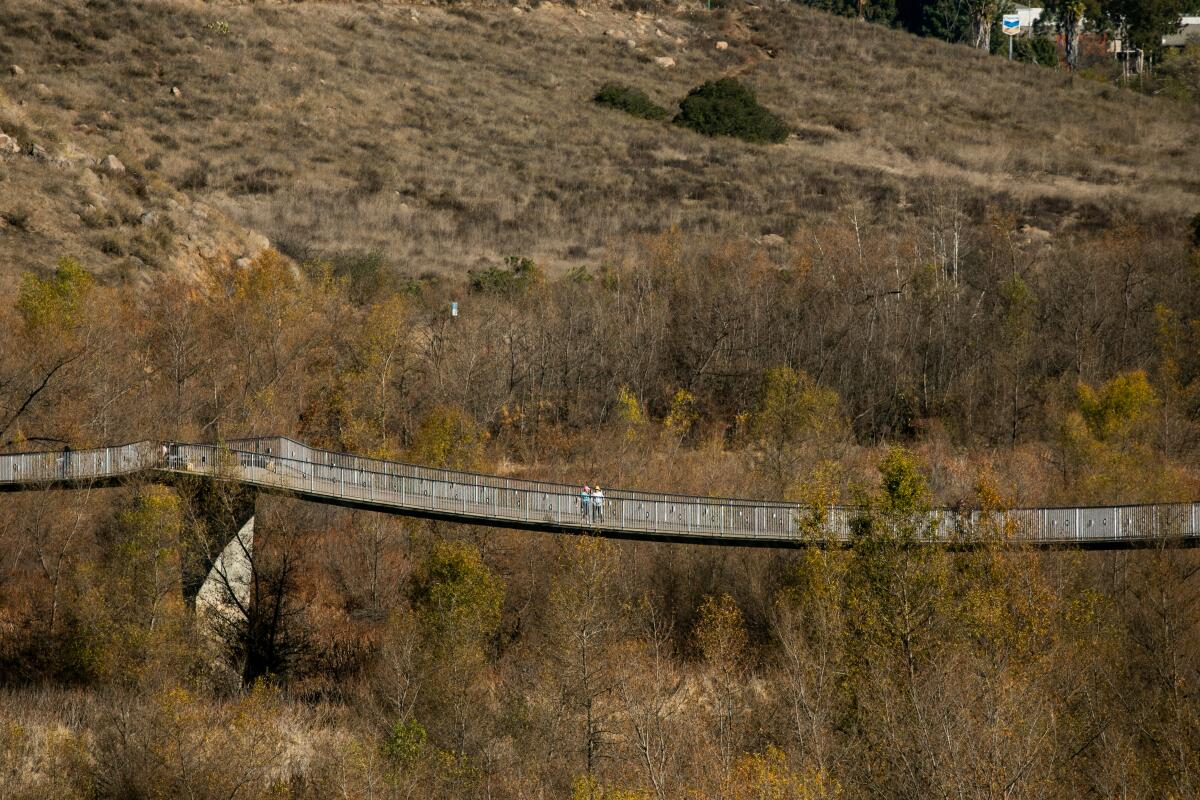Conservancy acquires 117 acres overlooking Lake Hodges in San Diego County

- Share via
ESCONDIDO — A wide swath of virgin habitat for rare or endangered native California species from songbirds to shrubs has been added to the holdings of the San Dieguito River Valley Conservancy.
The 117 acres is north of the Del Dios Highway overlooking Lake Hodges near Escondido, and expands the conservancy’s holdings to about 700 acres along the river valley from Del Mar to the top of Volcan Mountain in Julian.
The conservancy and its partners have been working since 1986 to create the 70-mile Coast to Crest Trail along the river, of which 48 miles has been completed so far. The 22 miles from the Rancho Santa Fe area past Lake Hodges to the San Pascual Valley and state Route 78 is the longest single contiguous section of the trail to date.
Much of the trail and the conserved lands are within the regional San Dieguito River Park.
“The San Diego County region of California has been identified as a major ‘hot spot’ for biodiversity and species endangerment,” says a narrative written for the grants that helped purchase the property. “The area is experiencing rapid growth in population and urban development.”
At least part of the Lake Hodges property is within the Rancho Cielo Specific Plan, which designates 19 lots that could be subdivided for homes.
By acquiring the land, the conservancy ensures a viable, long-term habitat for species such as the coastal California gnatcatcher, an insect-munching bird with a song that sounds like a kitten mewing, and the Encinitas baccharis, a rare 6-foot-tall shrub found only in San Diego County and a small part of Riverside County.
San Diego County’s multiple species conservation plan covers 26 species on the federal list of plants and animals threatened with extinction by the spread of urban development.
The Del Dios property was purchased for $3 million, including $367,000 raised by the conservancy from more than 2,200 donors in three months.
The local money was matched with a grant of almost $1.6 million from the U.S. Fish and Wildlife Service, and the California Wildlife Conservation Board provided more than $550,000.
Diehl writes for the San Diego Union-Tribune.
More to Read
Sign up for Essential California
The most important California stories and recommendations in your inbox every morning.
You may occasionally receive promotional content from the Los Angeles Times.














